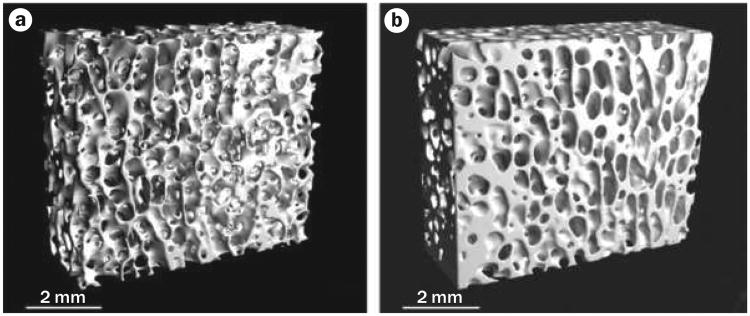Figure 3.
Low-magnitude mechanical signals are anabolic to bone. Microcomputed tomography of 1 cm cubes of trabecular bone from the distal femur of adult (8-year-old) sheep, comparing a | a control animal with b | an animal subjected to 20 minutes per day of 30 Hz (cycles per second) of a low-level (0.3 g) mechanical vibration for 1 year. The large increase in trabecular bone density results in enhanced bone strength, achieved via bone strain three orders of magnitude below those that cause tissue damage. These data suggest that mechanical signals need not be large to be anabolic to bone, and might represent a non-drug basis for the prevention or treatment of osteoporosis. Permission obtained from J. Bone Miner. Res. 17, 349–357 © (2002) American Society for Bone and Mineral Research.44

